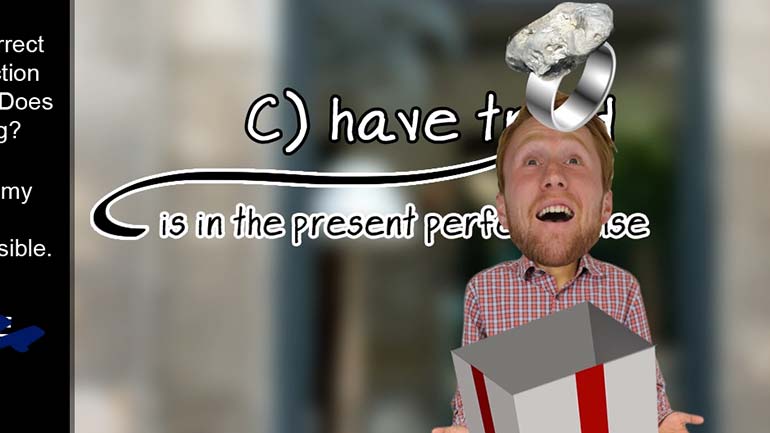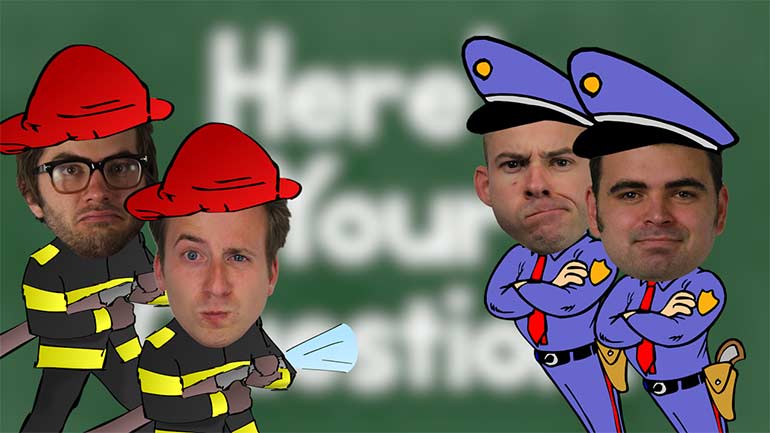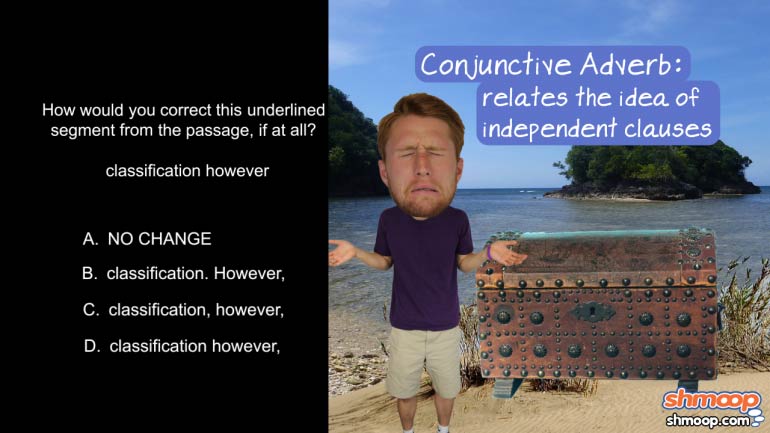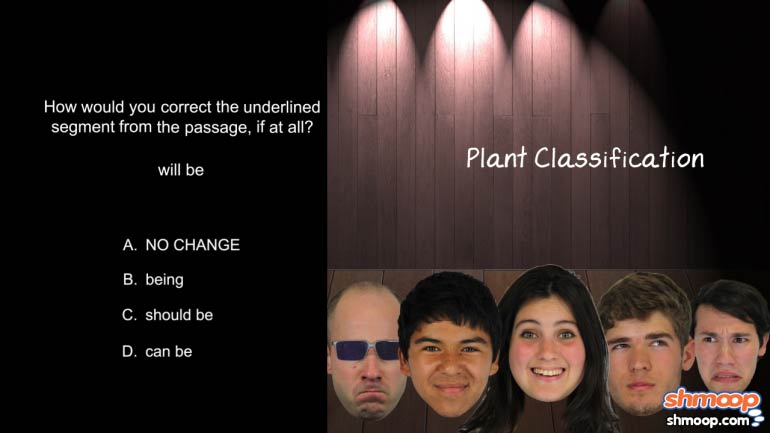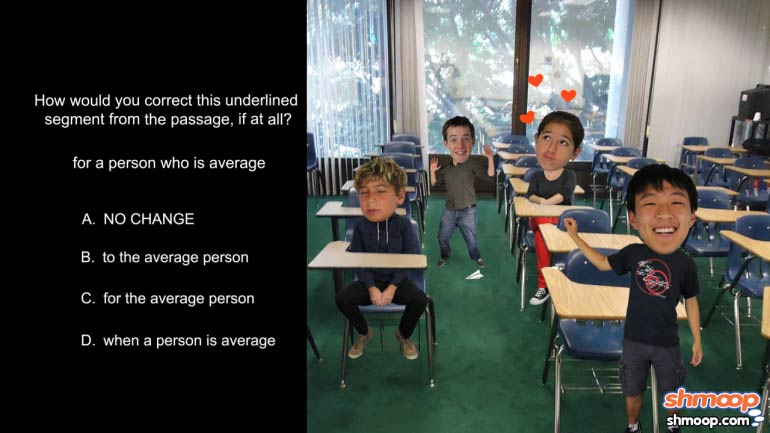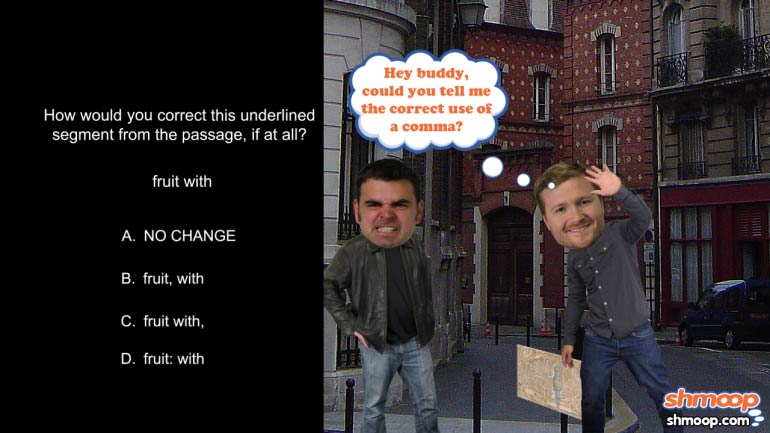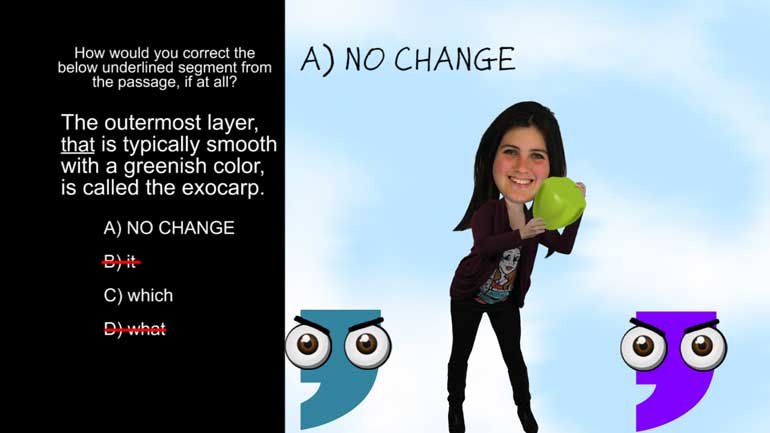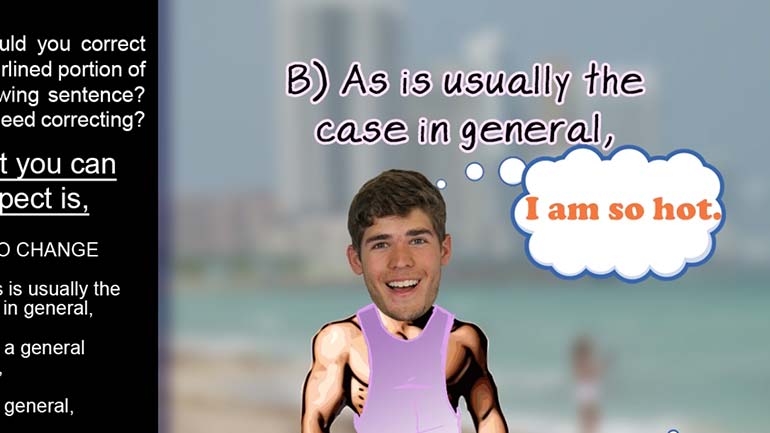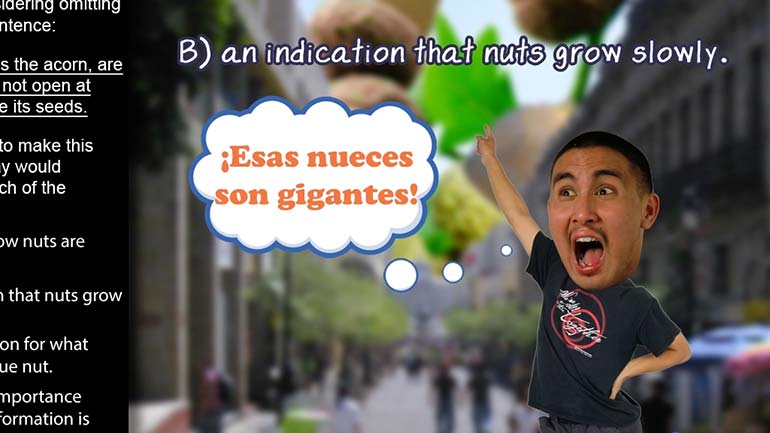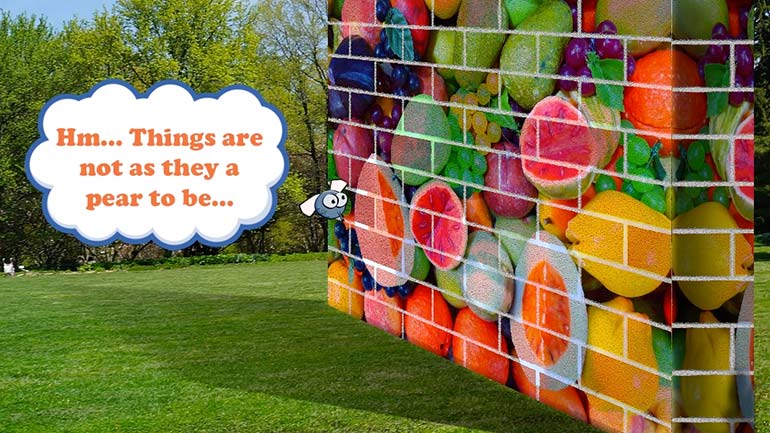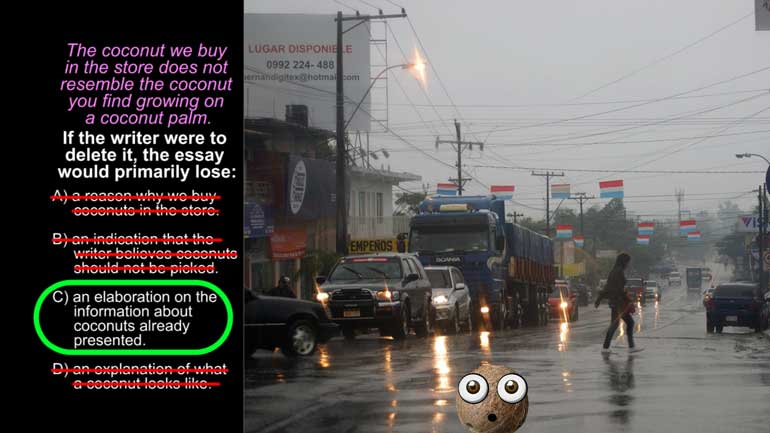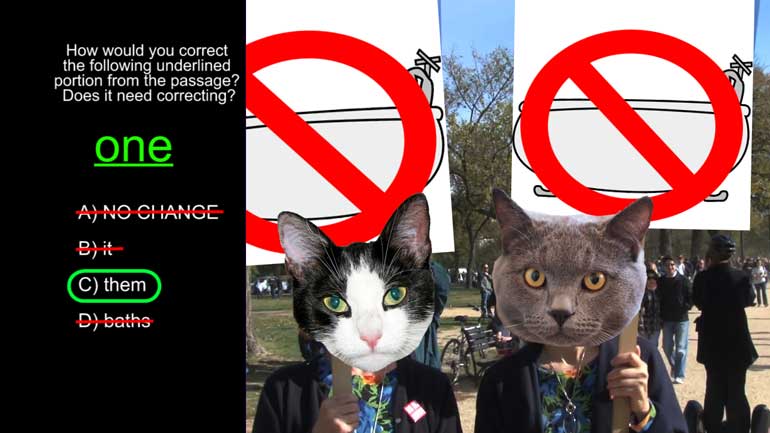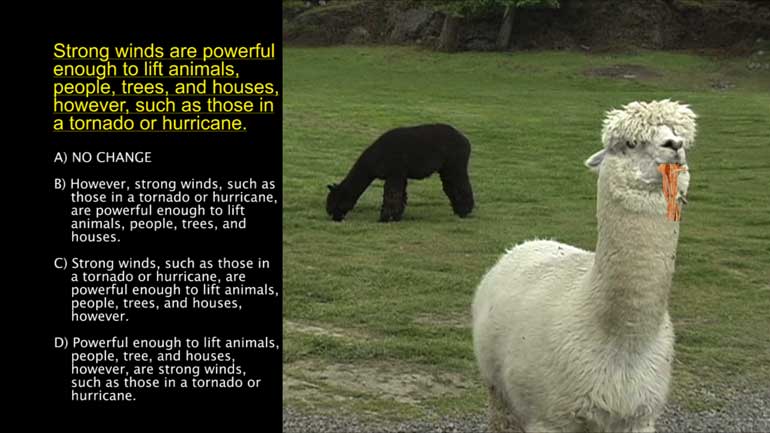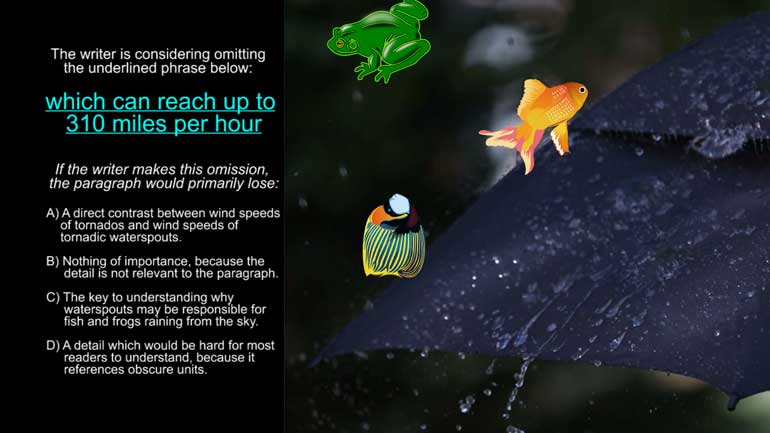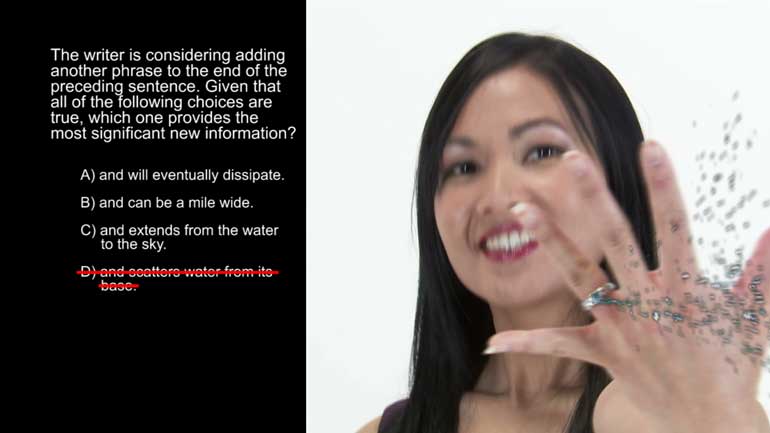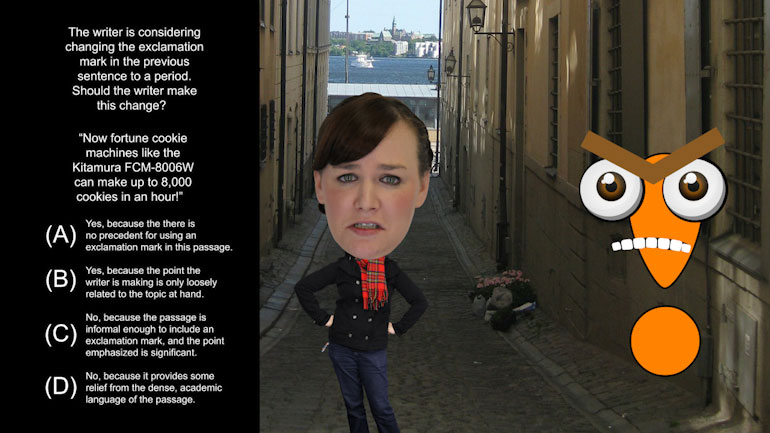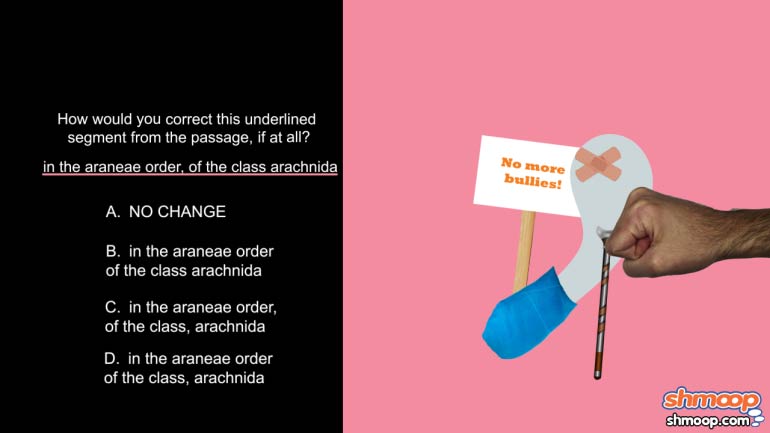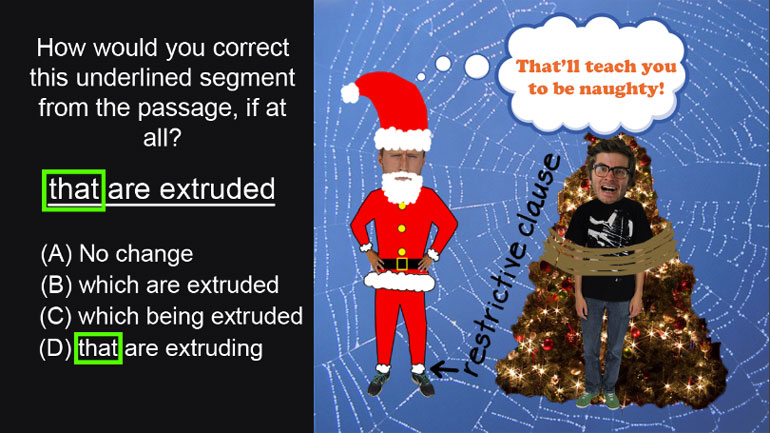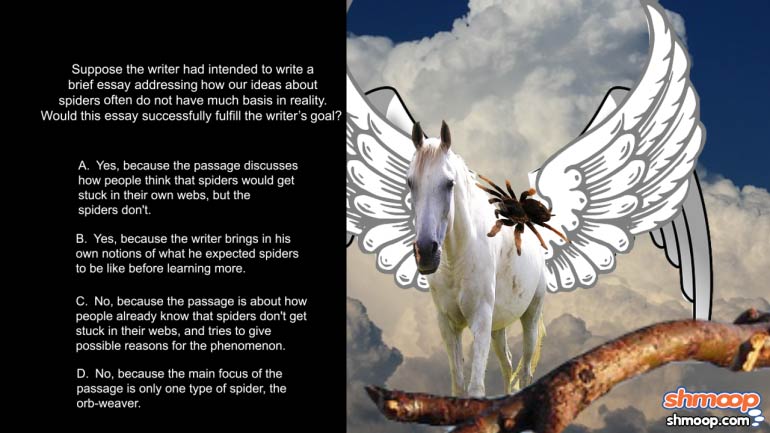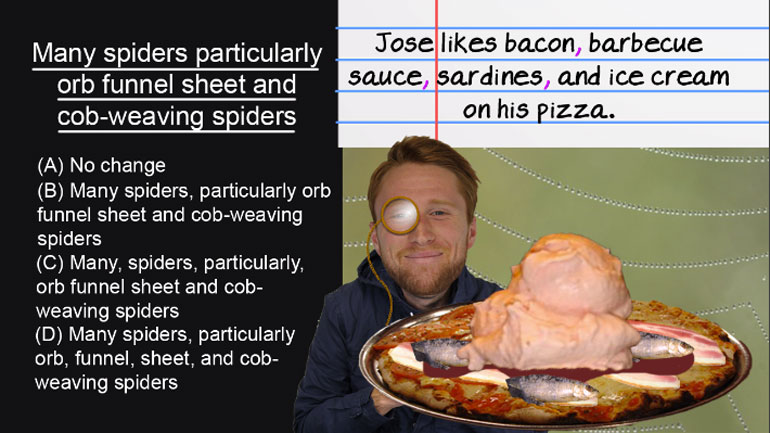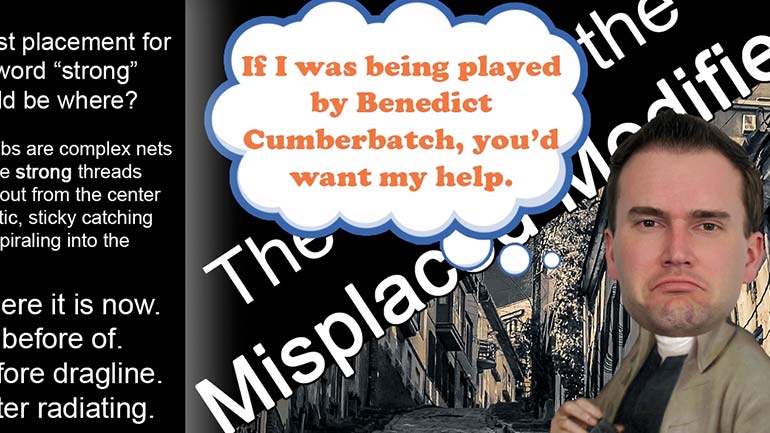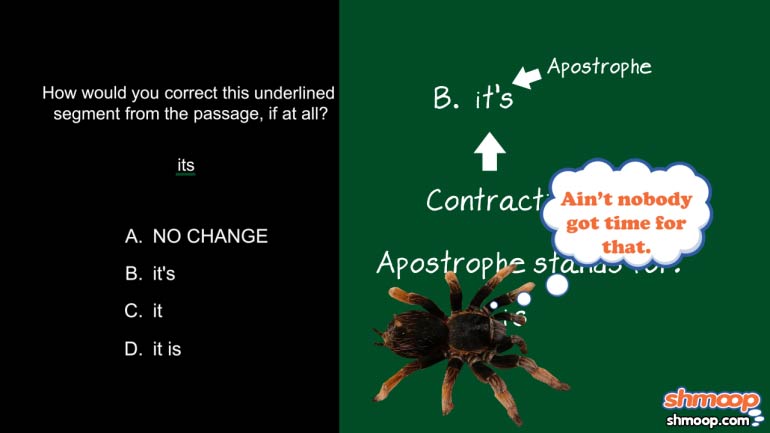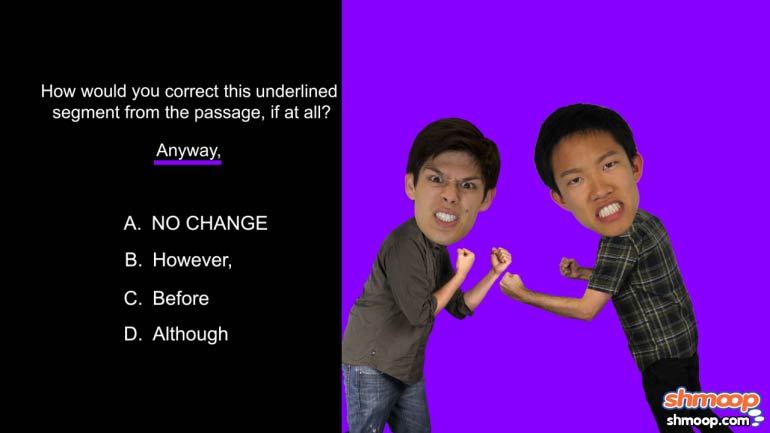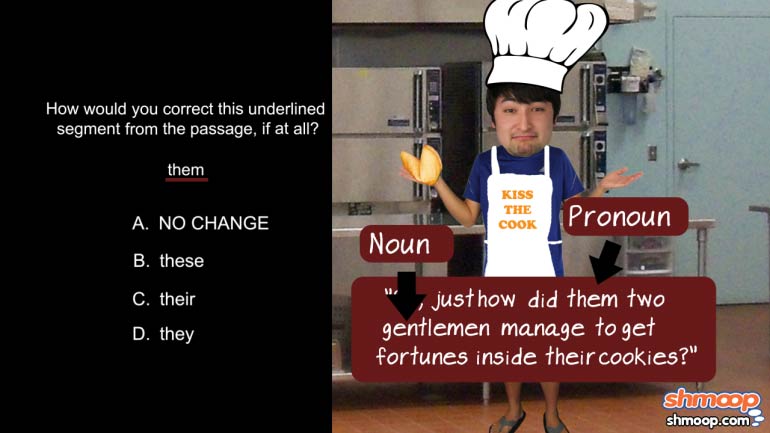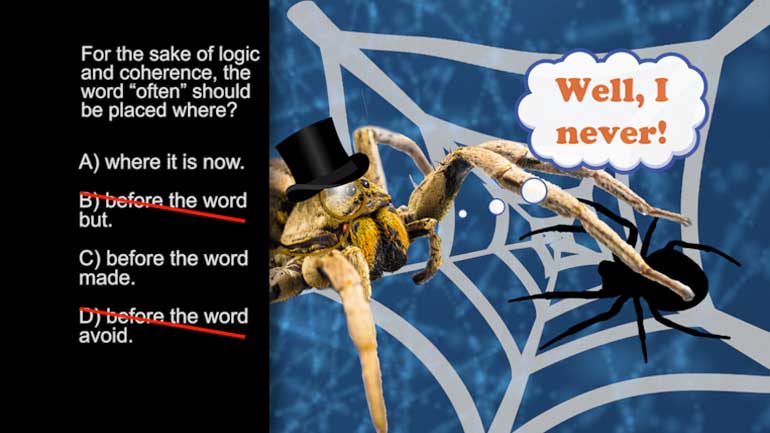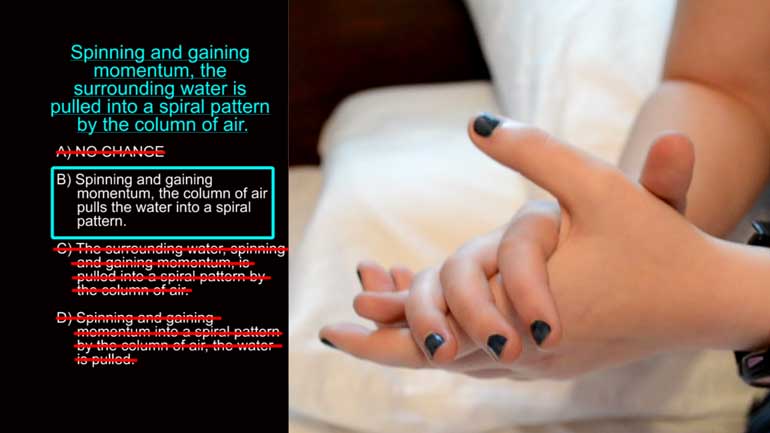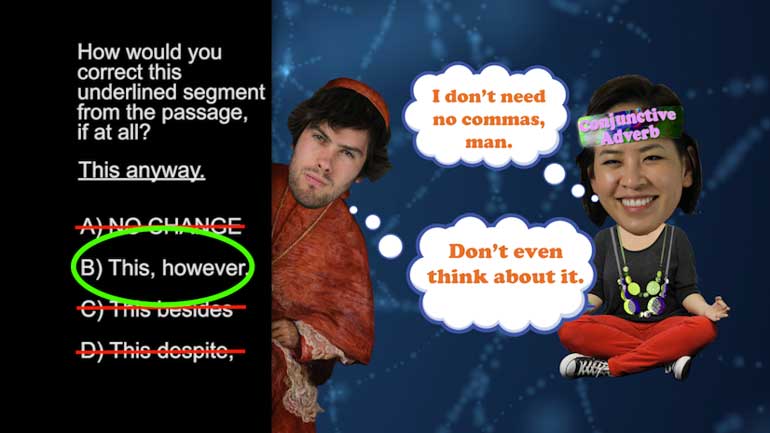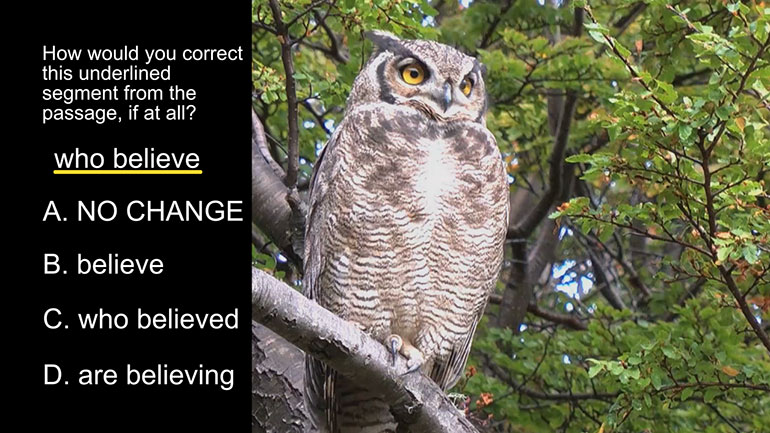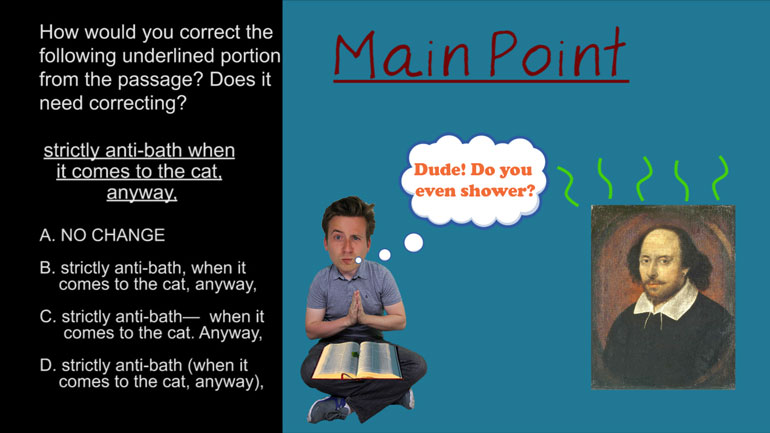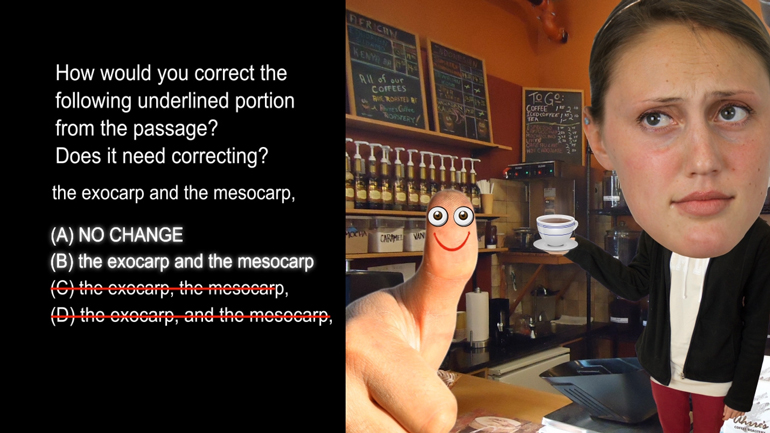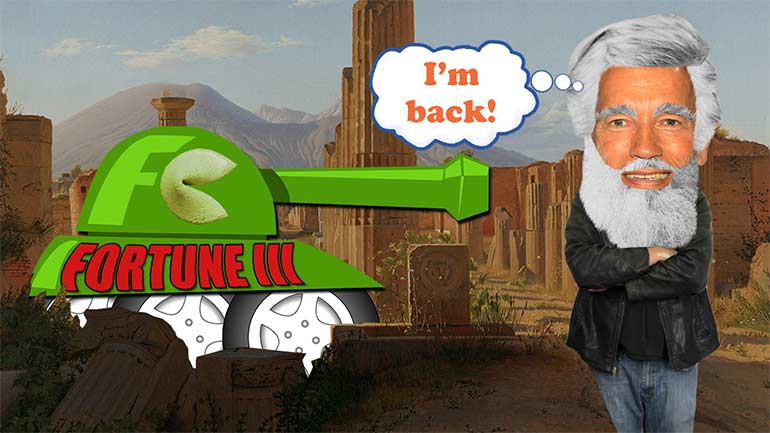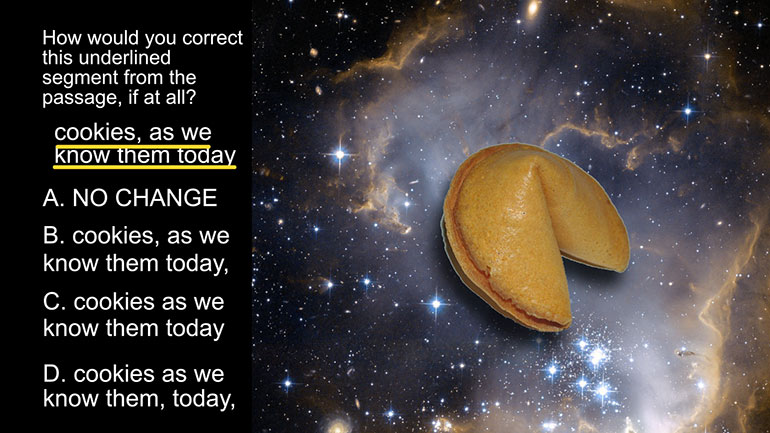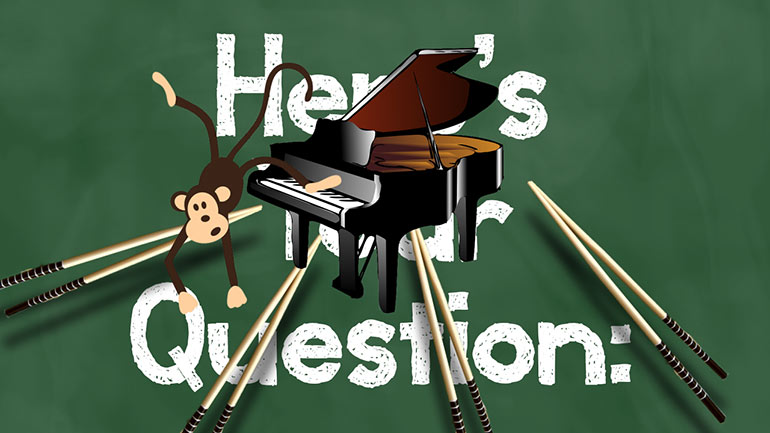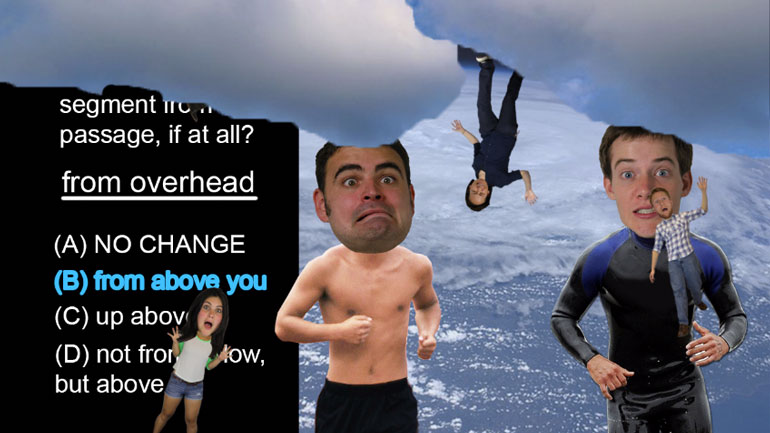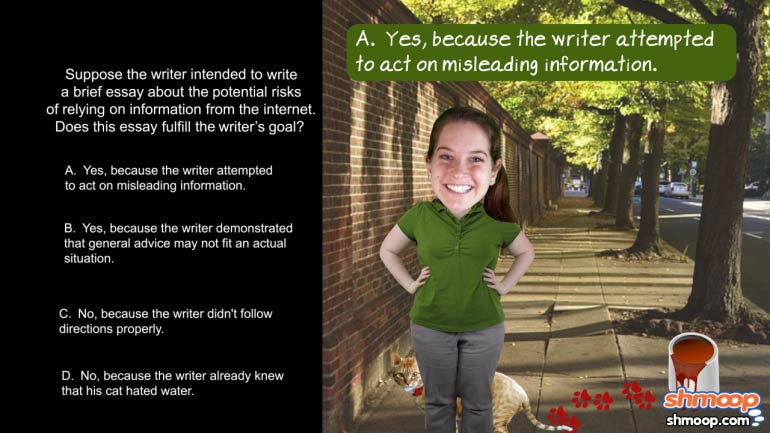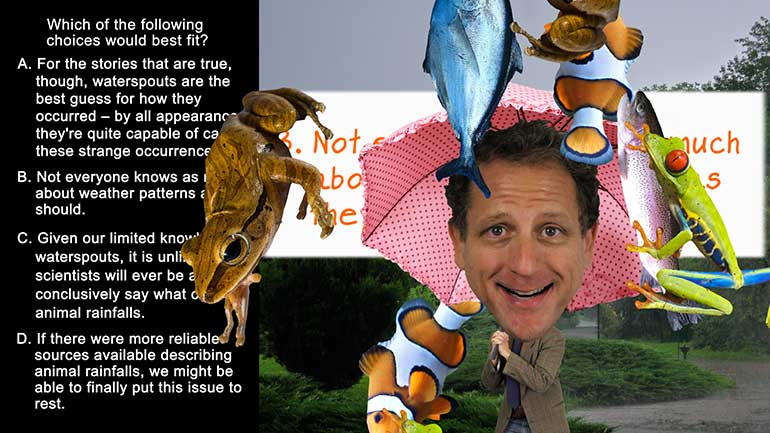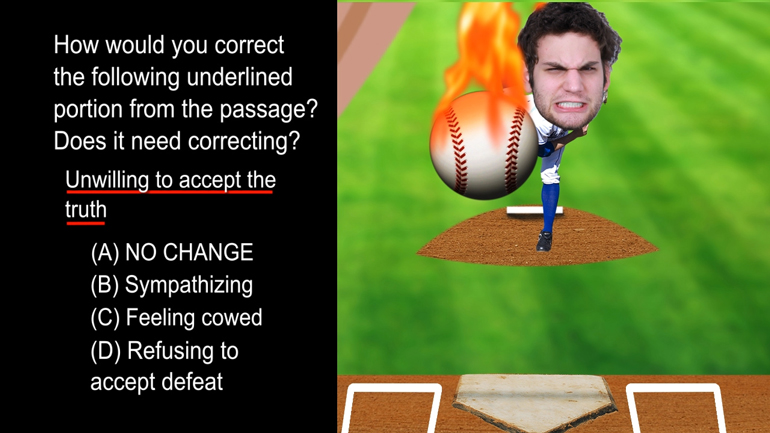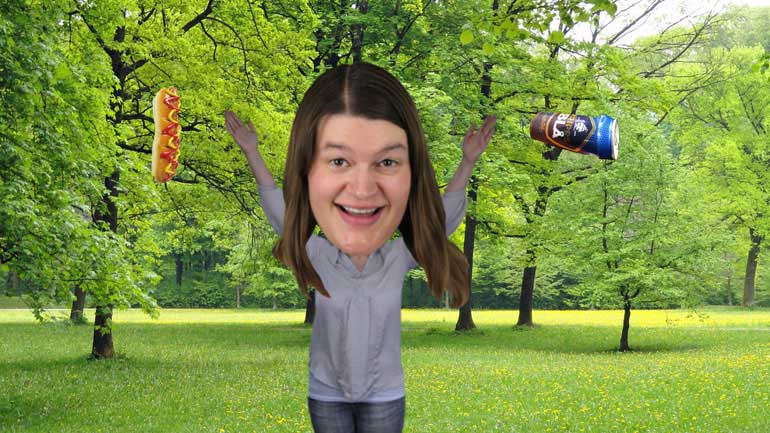ShmoopTube
Where Monty Python meets your 10th grade teacher.
Search Thousands of Shmoop Videos
Passage Drill Videos 75 videos
ACT English: Passage Drill Drill 2, Problem 6. Which verb best matches the subject's emotional state?
ACT English: Passage Drill Drill 2, Problem 1. What is the correct tense for the underlined portion?
ACT English: Passage Drill Drill 2, Problem 7. Which pronouns properly convey the meaning of the sentence?
ACT English 5.10 Passage Drill 170 Views
Share It!
Description:
ACT English: Passage Drill 5, Problem 10. How would you correct the beginning of the sentence if at all?
Transcript
- 00:03
Here’s your Shmoop du jour, brought to you by spider glue.
- 00:07
Giving Gorilla Glue a run for its monkey...we mean, money.
- 00:22
How would you correct this underlined segment from the passage, if at all?
- 00:26
There is?
- 00:27
And here are the potential answers...
Full Transcript
- 00:33
There’s no apparent rhyme or reason to these answer choices; we’ll have to jump right in.
- 00:37
Let’s begin by nixing option (B).
- 00:40
The word “maybe” is redundant since the word that follows is “perhaps.”
- 00:45
These words mean the same basic thing, so there’s no need for both.
- 00:48
People who say maybe and perhaps in the same sentence must be really unsure of themselves.
- 00:52
Answer (C) is both needlessly wordy and in the wrong tense.
- 00:56
The phrase “What has been” is in the present perfect tense, while the rest of the sentence
- 01:00
is in the simple present.
- 01:01
Unless a writer thinks it’s fun to confuse the reader, it’s usually a bad idea to randomly shift tenses.
- 01:06
Option (C) is a definite no.
- 01:08
(A) thinks it’s a good idea to begin the sentence with “There is,” but we have to disagree.
- 01:13
Plunking these two words at the top of the sentence is a bad idea because they hijack
- 01:17
the positions of subject and verb.
- 01:19
This sentence already has a subject and verb--“part” and another “is”--
- 01:23
so there’s no need for any more.
- 01:25
This leaves us with choice (D), the correct answer.
- 01:28
The best thing to do is omit the underlined segment entirely.
- 01:31
We advise the sentence to cut its losses and move on with its life.
- 01:35
It might be difficult at first, but with time the healing will come.
Related Videos
ACT English: Punctuation Drill 2, Problem 2. Where should the semi-colon be placed?
ACT English: Punctuation Drill 3, Problem 1. How should this sentence be changed so that it is grammatically correct?
ACT English: Punctuation Drill 3, Problem 2. How should we properly hyphenate the words in this sentence?
ACT English: Punctuation Drill 3, Problem 4. Which choice best formats this list of items?
ACT English: Punctuation Drill 2, Problem 1. Which choice of punctuation best completes the sentence?

